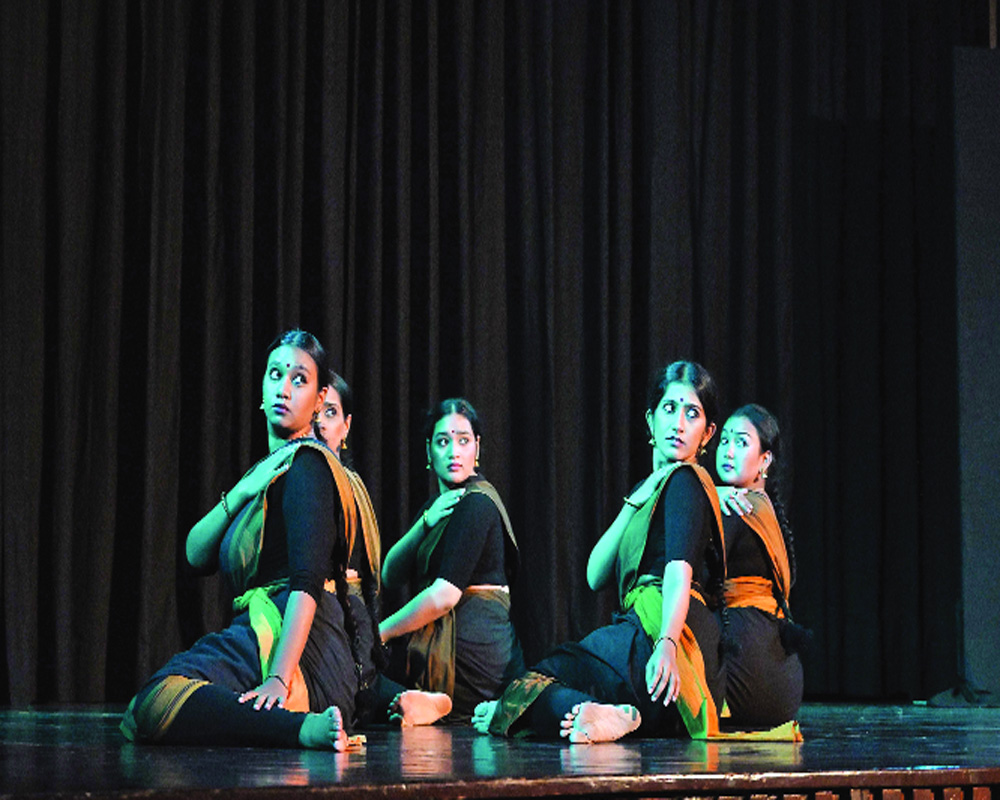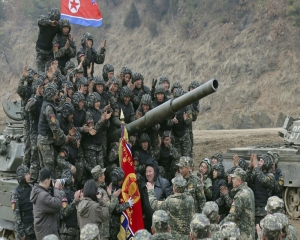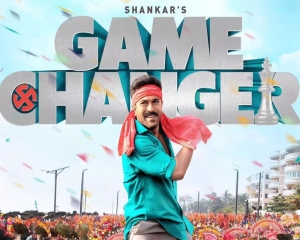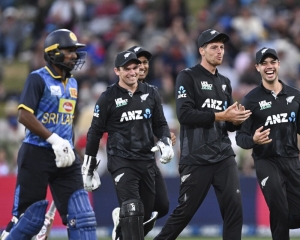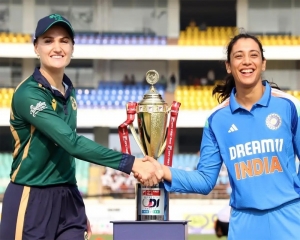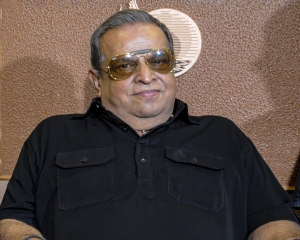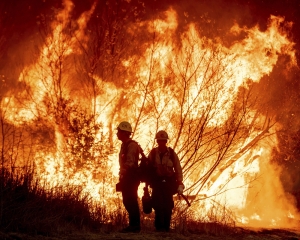In celebration of WISCOMP's 25th anniversary, Bharatanatyam legend Geeta Chandran and the Natya Vriksha Dance Collective delivered a moving performance, “Our Voice,” which explored women’s struggles, resilience and hope in times of conflict, says SAKSHI PRIYA
The hall was utterly still, a silence so real that it felt as though the entire audience had collectively held its breath. Not a single whisper broke the stillness. The audience was captivated by the intensity of the performance unfolding before them. As the final movement came to an end, the applause burst forth. It wasn’t a brief acknowledgment, but a wave of appreciation that seemed to last forever.
At the heart of it all was none other than Padma Shri awardee Geeta Chandran, a living legend in the world of Bharatanatyam. As she performed, she commanded the stage with a presence so powerful it drew in every single spectator, binding them to her every move. It was not just a performance; it was an experience, one that resonated deeply with everyone in the room. Chandran, true to form, paid meticulous attention to every detail. Every gesture, every glance, every step was deliberate, contributing to a performance that was nothing short of spectacular.
This evening was particularly special as it marked WISCOMP's (Women in Security, Conflict Management, and Peace) 25th anniversary. The event, Our Voice, was a collaboration between Chandran and the Natya Vriksha Dance Collective, commissioned by WISCOMP itself. Held at the C.D. Deshmukh Auditorium in New Delhi, the performance centred on the themes of women, war, and peace. Through the expressive language of Bharatanatyam, Chandran told a story that resonated deeply, not just because of its artistry, but because of its urgent relevance.
What made ‘Our Voice’ so compelling was the way it wove together the struggles of women with such authenticity and emotion. Chandran’s portrayal of these themes was both profound and deeply human. It was not just a dance but a narrative, a reimagining of the age-old battles women have fought, battles against patriarchy, oppression and a world that too often refuses to hear their voices. Yet, this was not a lament. It was a celebration of resilience, strength, and the quiet but relentless pursuit of peace.
I’ve seen many performances, but few have moved me as deeply as this one. There was something about the rawness of the emotions, the way the dancers moved together yet each held their own individual power, that struck a chord. Chandran’s ability to take such complex, painful themes and distil them into something so beautiful, so evocative, is nothing short of genius.
In the words of Chandran herself, Our Voice was a deeply personal project, one that took her out of her comfort zone. She explained how the process of creating this piece began with conversations about women’s issues, particularly the price women pay in times of war. However, it wasn’t just about war in the literal sense; it was about the daily battles women face, the constant struggle to find space for their agency in a world that often seeks to diminish it. From these discussions, the script evolved into something larger, a movement, a performance that speaks not only of women’s suffering but of their incredible capacity for endurance and hope.
And it was this hope that stayed with me long after the final bow. Hope, not as a vague or distant ideal, but as something real, something these women, these dancers, brought to life before our very eyes. Dr. Meenakshi Gopinath, Founder and Director of WISCOMP, captured this sentiment perfectly when she said that Chandran’s performance was “sheer poetry in motion on the audacity of hope.” It’s true. There was something bold about the performance, not in its defiance, but in its belief that, despite everything, peace is possible. That women, even in the face of conflict, trauma and violence, continue to fight not just for survival, but for a better world.
This was not the first time Geeta Chandran has tackled such themes. Our Voice is a continuation of her earlier work, Her Voice, performed 25 years ago. While the original piece focused on Draupadi’s personal losses from the Mahabharata, this newer work took on a broader scope, exploring the universal struggles of women against patriarchal forces. Chandran’s use of water as a metaphor for women’s lives, fluid, powerful, yet constrained - was especially poignant. It was a reminder of how often women’s potential is stifled by societal expectations, but also of how, like water, they continue to find ways to flow, to push forward.
It wasn’t just Chandran’s individual brilliance that made the evening so powerful, though. The Natya Vriksha Dance Collective, a group of dancers entirely trained by Chandran, added a richness and depth to the performance that was undeniable. There was an unspoken trust and connection between the dancers, a shared understanding that made their movements feel like a conversation, not just between themselves, but with the audience. Each dancer brought something unique to the performance while contributing to the overall harmony of the piece.
As the performance ended, the applause was not just a formality. It was a recognition of something greater, a shared experience that had left everyone in the room changed in some way. The clapping didn’t just end; it stayed with us, persistent and filled with emotion. It was as if the audience didn’t want to let go of what they had just witnessed, as if by continuing to applaud, they could hold on to the feeling a little longer.
Reflecting on the evening, I realised that what moved me most wasn’t just the technical skill or the beauty of the dance, though both were extraordinary. It was the way in which the performance so perfectly captured the essence of WISCOMP’s mission. For 25 years, WISCOMP has worked to promote women’s leadership in peace and security, and this collaboration with Geeta Chandran was a powerful tribute to that legacy.
Art has always been a way to explore difficult subjects, provoke thought and inspire change. ‘Our Voice’ did all of that and more. It reminded us that the struggles of women are not confined to history books, but are ongoing and very real. Yet, in the face of these struggles, there is also incredible strength, resilience and most importantly, hope. As I walked out of the auditorium that night, I carried that hope with me.













